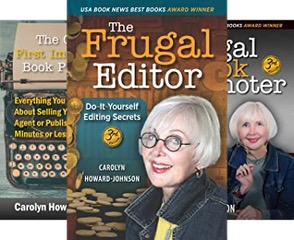By Karen Cioffi, Children's Writer
I’ve noticed that people who want to write a story, but are new to the arena, don’t understand what’s involved in writing a good story.
I’ve seen lots of drafts that are cute, but they have no story arc or character arc. They’re a series of related events or incidents … they’re not a full story.
Another thing, sometimes along with these story ideas that don’t have a story arc, a lot of new authors don’t want to make their characters real, especially the protagonist.
A story and its characters should have ups and downs, ins and outs. It shouldn't be a steady ride or read. It should be like the horse on a carousel that doesn't move aside from going round and round.
First let’s touch on what makes a full story arc.
The very first thing is your protagonist needs a big problem. Something that needs to be overcome.
Here are a couple of examples of a problem that needs to be overcome:
• Maybe Rafael is being bullied at school.
• Maybe Sophia just got a new bike and was told not to leave it alone anywhere. She leaves it unattended at the park and it’s stolen.
• Maybe Rick is the kid who no one chooses for their team and he’s getting very upset about it.
• Maybe Lisa moved to a new neighborhood and has to start a new school. She’s anxious over all the changes.
After the problem has been established, the main character (MC) needs to try to figure out how to overcome the problem.
But as life isn’t smooth, the MC can’t overcome the problem in one attempt.
The protagonist needs to struggle to reach the goal. He needs to try a couple of things and fail and become deflated before he finally comes up with a plan that leads to success.
Along with the MC succeeding, there must be some kind of growth.
• Maybe, he learns he’s not the person he thought he was, like with Wang in Walking Through Walls.
• Maybe she learns compassion.
• Maybe he learns that winning isn’t everything.
• Maybe she learns how to make friends.
The story arc and character arc both have a beginning, middle and end. In children’s writing, the story arc, in a way, relies on the character arc. They go hand-in-hand.
When thinking of a story arc, think of a triangle.
1. The exposition. At the bottom of the left side is the introduction. The MC and setting is introduced.
2. The trigger. The problem appears (the inciting incident). It may be internal or external, but it needs to be addressed.
3. The quest. The MC struggles to overcome the problem. The action is rising as is the conflict. The MC finds obstacles that must be overcome on her quest to find a solution.
4. The climax. The MC has made a critical choice and is engaging in his final attempt. He’s chosen his path and it’s the beginning of his change. The action declines as everything unfolds.
5. The resolution. The MC has overcome the problem. He’s successful. And he’s grown in some way as a result of the journey.
For #4, the climax, think of a kid who’s about to steal for the first time. Will his conscience kick in and stop him or will he go through with it?
So, you can see that having a series of related incidents does not lend itself to a true story, to a full story arc.
Next up, you’ve got to write real characters, ones that are believable.
I hear it all the time, my clients, who are usually new authors, want a fun story, but they don’t want their MCs to have any bad traits.
In a children’s story, this means the young MC can’t yell. He can’t do anything bad. He doesn’t think bad thoughts.
What kid will be able to relate to a perfect MC.
Your characters need to be realistic, believable. Kids yell, kids can be mean, they can be selfish, they can be liars, and so on. They have good days and bad days.
If your MC isn’t believable, the reader won’t connect with him.
Characters need to have ups and downs, just like the story arc.
This article was first published at: https://karencioffiwritingforchildren.com/2019/10/20/your-story-should-be-like-a-roller-coaster/
ABOUT THE AUTHOR
Karen Cioffi is an award-winning children’s author and children’s ghostwriter, editor, and coach with clients worldwide. If you need help with your children’s story, please visit: Karen Cioffi Writing for Children.
In addition, she offers self-publishing help for children’s authors. To learn more, you can visit WRITERS ON THE MOVE PRESS.
Karen also offers HOW TO WRITE FOR CHILDREN, a self-guided ecourse and mentoring program.



















.jpg)


.jpg)



